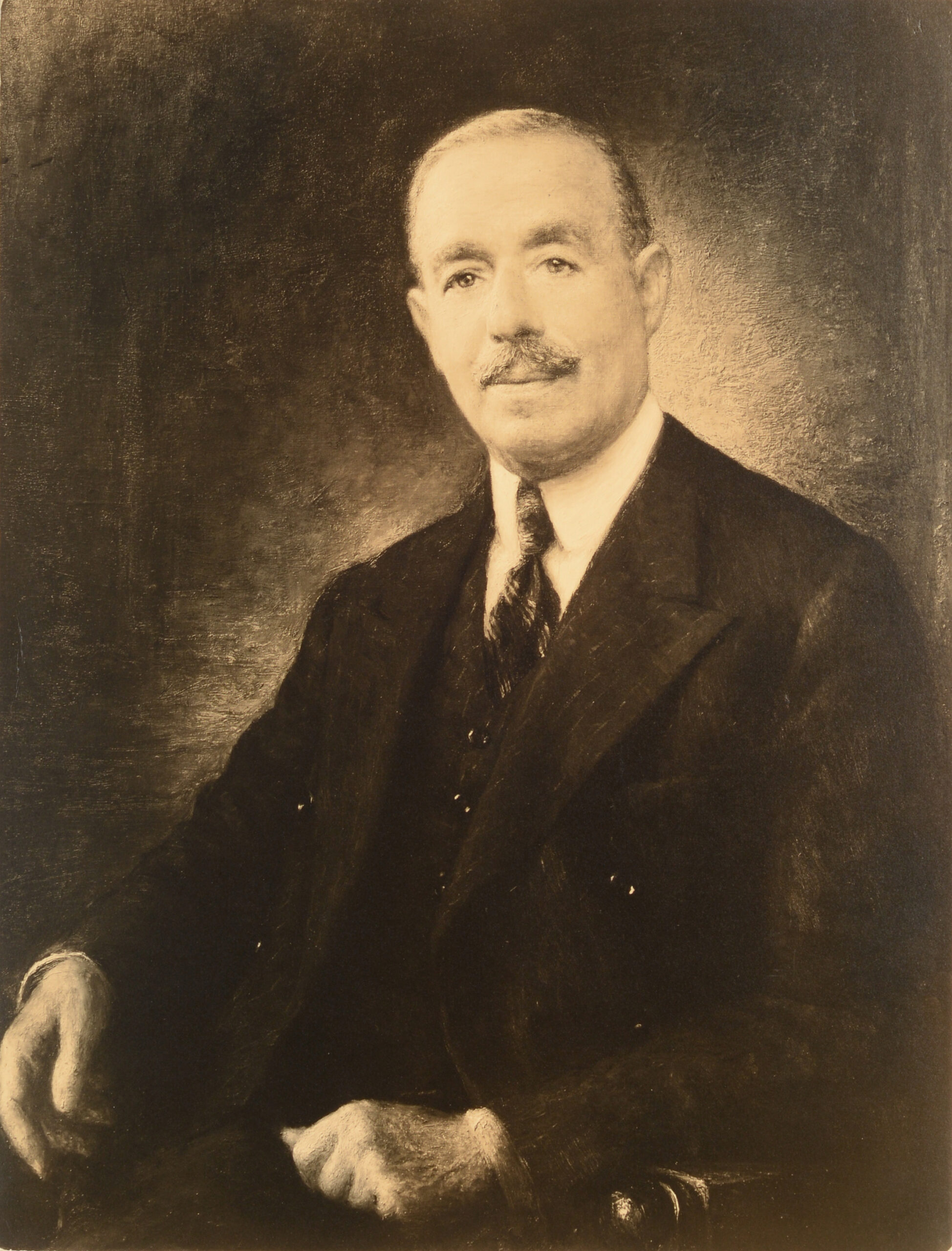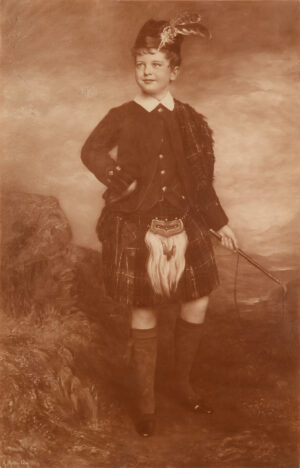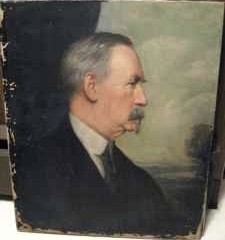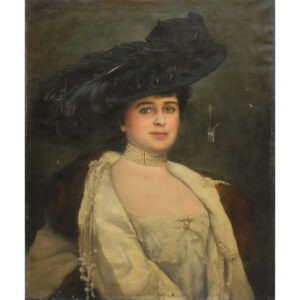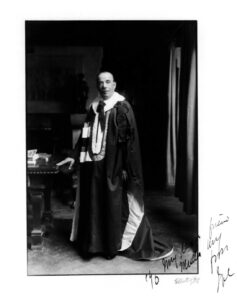
Duveen photographed in his peer’s robes the day he took his seat in the House of Lords. Inscribed to Muller-Ury.
The sitter was born on October 14, 1869 in Hull in Yorkshire, the eldest son of the thirteen children of Sir Joseph Joel Duveen who founded the famous art dealing business with his brother Henry. Joseph Duveen was knighted in 1919, created a Baronet in 1926, and created a Peer in 1933. He died at Claridges Hotel, London, on May 25, 1939.
Bibliography:
S.N. Behrman, Duveen, Hamish Hamilton, London, 1952, 1972
Edward Fowles, Memories of Duveen Brothers, Times Books, London, 1976
Colin Simpson, The Partnership, Bodley Head, London, 1987.
Meryle Secrest, Duveen: A Life in Art, hardback, New York, 2004; paperback, Chicago 2005.
—
The artist recorded in his Diary for October 12, 1935, that Duveen had commissioned him to paint his portrait for London. It was, however, probably not painted until 1938/1939 owing to the sitter’s frequent bouts of illness and operations.
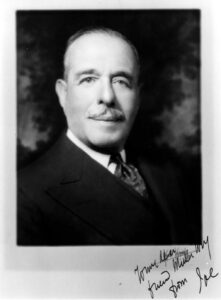
A 1930s photograph of Baron Duveen of Millbank, dedicated to Muller-Ury.
After Duveen died in May 1939 Duveen Brothers refused to accept this portrait and to pay for it. Indeed, they made a claim against the artist to repay money Duveen had lent the artist at the height of the depression to repair hurricane damage to his San Marino studio, and for which the artist had signed two promissory notes. (The artist had recorded in his diary on March 28, 1936 that he needed to borrow $3000 from Duveen.) Correspondence for the battle that ensued between the Duveen firm, Duveen’s estate lawyers and the artist survives at the Getty Research Center in Los Angeles. The Duveen firm claimed the portrait was not lifelike, against which accusation the artist received supporting letters from Jules Bache and others. The artist seems to have taken advantage of the delays caused by transatlantic communications in wartime and used many delaying tactics (including illness) to try to persuade the Duveen firm and Lady Duveen to pay him for the work (from which his financial debt would be taken), but in the end it was not until in 1943 that the UK lawyers – in exasperation to wind up Duveen’s affairs – that Muller-Ury’s lawyer Martin Conboy and his friend H. O. Havemeyer agreed that the artist would take the picture back, but have to pay $1000 to retrieve the two promissory notes. They were also keen to return a number of items that Duveen had promised to try to sell for the artist.
But, regrettably for the present biographical project, the bulk of many years of correspondence between the artist and Joe Duveen was destroyed by orders of John Allen (as a note in the Getty’s files declares), the Duveen firm’s Financial Comptroller (although, owing to misfiling, they missed destroying a small section filed under Muller rather than Ury, and there is some internal evidence in other files), but ironically filed the correspondence about the legal battle.
It is known that a portrait of Duveen was exhibited at the artist’s last show ‘Portraits and Roses’ at French & Co. Inc, New York, April 21 – May 3, 1947, as No. 11, but which of the three portraits is unknown. An extra lot called Portrait of Sir Joseph Duveen was sold at the Plaza Art Galleries, 9-11, East 59th Street, New York, Friday Evening, December 5, 1947, Sale No. 2813, as Lot 75C (Sold for $20.00 – marked copy in the Frick Art Reference Library).
The duotone photograph in the artist’s papers is stamped Peter A. Juley & Son.


